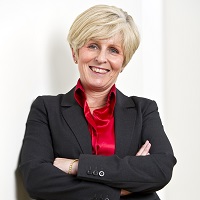Female workforce participation- all D and no E or I?
BLOG

FEMALE WORKFORCE PARTICIPATION- ALL D AND NO E OR I?

Most firms identify E,D&I as the right thing to do and as “smart business” – it is an accepted and proven fact that business' with diverse cultures and work populations are thriving, their results exceed those business' with a less diverse community. So why in 2020 with recruitment strategies and practice putting a high index on diverse hiring, do 50% feel their career opportunities are limited because of their background or identifying factors? Including, 28% based on their gender?
And why have women, particularly women of colour, been more negatively affected by the COVID-19 crisis? A survey by our Dutch business found 30% of women feel they have been successful when reaching a middle management position, only 21% of men see this same achievement as a success.
Could it be that women are more modest and less ambitious? Or could it be that whilst 22% of workers believe their organisations have a clear diversity policy, only 10% believe that it is being adhered to?
Is inclusion the missing link to driving results?
A recent McKinsey Survey suggests it’s certainly the later, identifying that Inclusion and Diversity (I&D) practitioner organisations are widening the gap between themselves and the companies yet to embrace I&D; 33% of firms are making gains, but most are making little progress.
When they sought to uncover what the leading organisations were doing differently they uncovered two critical components; a systematic business-led approach, and decisive action on inclusion.
This is perhaps unsurprising, as whilst diversity creates the potential for different opinions and ideas, inclusion allows potential to be realised. Inclusion encompasses the behaviours and social norms that make people feel welcome and increases the participating and contribution of all employees.
The disproportionate affects of 2020
Before this year, LeanIn.Org and McKinsey’s Women in the Workplace research had consistently found that women and men leave their companies at comparable rates. However, this year more than one in four women are contemplating downshifting their careers or leaving the workforce completely. With almost three in four citing burnout as the main reason.
According to the Burnout Britain report, a third of all those who remained employed without being furloughed were working more hours than usual. And whilst during the COVID-19 crisis many companies took important steps to support their employees to work remotely and support their wellbeing, few took formal steps to tackle the increased responsibilities and workload, both in the office and at home, that came with the crisis.
This trend is even more pronounced in Black women, who have also had to deal with heavy emotional toll that inevitably comes with the recent racial violence. LeanIn.Org and McKinsey found Black women are less likely than women overall to report that their manager has inquired about their workload or taken steps to ensure their work-life needs are being met.
Add to this the fact that fewer than one in three Black women report their manager has checked in on them in light of recent racial violence or taken action to foster an inclusive culture and it’s unsurprising Black women feel more excluded and are less likely to say they can bring their whole selves to work.
To build for better adopt an intersectional approach to diversity; don’t forget equality
If companies are serious about realising the proven business benefits a diverse workforce brings then they must begin to consider how the different strands of diversity overlap.
In 1989 Kimberlé Crenshaw coined the term intersectionality to explain the impact of how the different facets of a person’s identity overlap. In Demarginalising the Intersection of Race and Sex she wrote: “Because the intersectional experience is greater than the sum of racism and sexism, any analysis that does not take intersectionality into account cannot sufficiently address the particular manner in which Black women are subordinated.”
Despite this 30 years later many still consider diversity policies solely in terms of dealing with separate categories, such as gender, sexuality, ethnicity, disability, etc. As proven by 2020’s Women in the Workplace report, this cannot be the case.
Diversity and inclusion efforts must give everyone equal opportunities to develop considering their background and the unique challenges they face. And this starts at the top. Leaders must recognise the barriers individuals face. Model the behaviours they want others to take. Rethink the measures they have in place. Back dedicated leadership and development training.
2020 has bought with it many challenges, but also opportunities. And as organisations seek to rethink their workforce strategies and approach to talent, they need to ensure they aren’t just setting diversity targets for activities like recruitment, but that they are also considering their role in building an inclusive culture and enabling equality.
To get all our latest thinking on Equality, Diversity and Inclusion visit our dedicated Diversity hub.
AUTHOR

Tina Millis
EMEA Head of Delivery
Tina has been managing and delivering corporate relationships since 1991, and has over 18 years at Director level. Tina has experience in leading UK, pan EMEA and Global RPO MSP delivery teams in Financial Services, ITC and Pharma sectors. This includes both on and off-site, near and off shore delivery models.
Tina has also directed one of the industry's largest MSP/RPO contracts using a tiered contracted supplier base. Her key strength is building and leading teams within a culture of collaboration. Tina creates enduring partnerships based on high quality delivery, continuous improvement and integrity.
